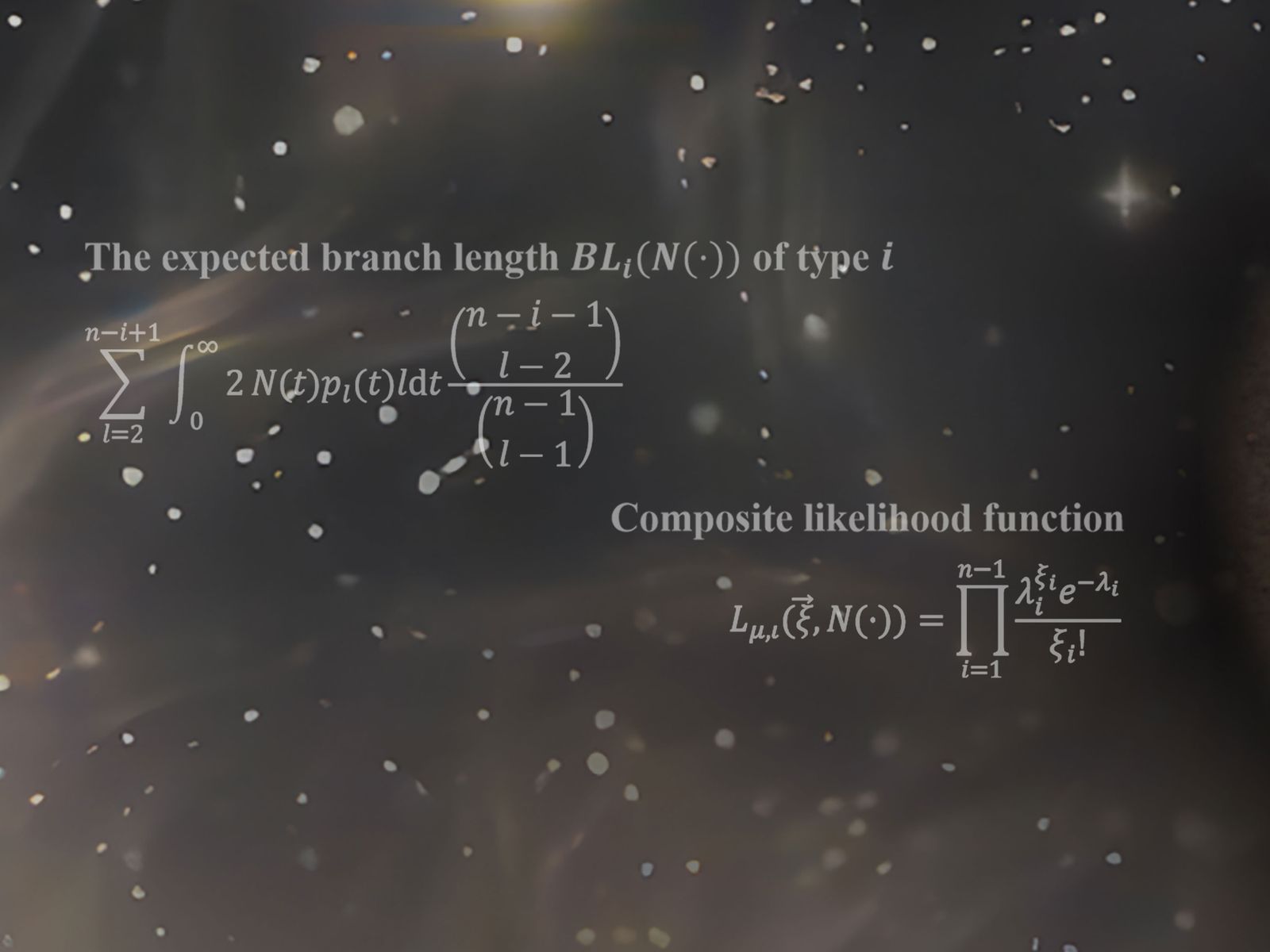This theory has been floating around for several decades. It’s fascinating to see a genetic study confirming it. There wasn’t enough direct evidence to prove it before.
I did a calculation in high school once using the exponential population growth equation to see what the population should be. My conclusion was that either the earth was actually very young, or we had almost gone extinct several times.
I went with the later, even though the equation turns out to not quiet be correct. Don’t know why I even remember doing that.
The logistic population growth formula is non-linear and has weird chaotic property when you feed back its own result recursively. Basically population growth doesn’t always go up, nor does it stabilise itself nicely (as one would expect), at least not without outside intervention.
What happens instead is a weird bifurcation where the population jumps closely between a minimum and a maximum one year after another, and it keeps bifurcing and getting more “random” the bigger and the longer the population has been going on.
This is the case for a whole bunch of stuff in nature, but population growth is really cool because it is somewhat easily observable outside physics and mathematics.
This mean if human population growth follow that of virtually every other animals on earth, it is likely to shake violently back and forth over and over again, up until maybe we reach a point where we do something about it. Hence it is very hard to guess the age of the specy or of the earth based on the current population, because the pattern is so wild and it goes in both directions. So I think your conclusion was correct, and it is likely to happen again, multiple times.
In 2021 the NYT ran an article on how the world’s population will be much lower by the middle of the century because people are having fewer children. @sj_zero This is not only a Western phenomenon. According to the data I’m citing, there is no mysterious natural cycle going on. People are having fewer children all around the world. We’ve known this for quite a while, now. It’s predictable because people are living longer, so not only is the world’s fertility rate plummeting, but the population that remains is getting older.
It’s pretty much undeniable given all the data that particularly in Western countries, but also in China and Japan, the population is about to collapse. It’s a natural part of a cycle of population growth and decline. Even though we have more than enough food to keep on growing, people can predict the overall cost of having kids, and have decided that they just can’t afford to pay that right now. As a result, we do have something of an economic boom in the short term, but in the long term expense of a population collapse.
That’s not such a bad thing. When the population shrinks, the importance of individual people rises, and the world tends to become more egalitarian. As the number of people increase, and the value of individuals tends to drop, leading to decrease in the value of individuals. If the future plays out the way that history did, we will probably see our kids or our grandkids living in a golden age where individuals have unprecedented Rights and freedoms because they’re so few of them.
Does this mean that at one point, there were 1,300 humans that were the only population around that could have given rise eventually to today’s population?
Or, that there were 1,300 individuals that happened to give rise to today’s population, and a whole bunch more that didn’t, but that would have if those specific 1,300 weren’t around?
I wasn’t able to tell from this article, and maybe the original study is a little more clever in its analysis, but there’s no clear indication of which it is in this article – which makes me think that maybe it’s #2 and the person that wrote it just hasn’t realized that #1 and #2 are very different statements.
(Or, maybe #1 gets more clicks, and they’re well aware of that.)
It’s #1, but there’s plenty of room for error, and the exact number the researchers came up with was 1280. That’s just what the genetic sampling says. They did the analysis on the samples that they have. It’s not like they could travel back in time and take a genetic sample of every populated area in the world, so it isn’t a precise number. However, they would expect more variation if there were more of the species actually living at that time. The number they came up with is useful, though. It tells you there weren’t a lot of people alive to reproduce at that time and they know there was a higher population of the species before that time. Also, outside of this article, the same evidence is cited along with how it is known that there was probably a huge population collapse thanks to other pieces of evidence. Anyway, plenty of specialists in multiple fields can confirm that environmental conditions were very harsh, making it very difficult for most forms of life to survive. So, the number, as outrageously small as it might seem, is pretty close to reality.
What’s their evidence that it’s #1, and not #2? I read the links but I still don’t see a reason why. I’m not saying it is #2, just that as you said:
They did the analysis on the samples that they have. It’s not like they could travel back in time and take a genetic sample
Yes, which means that the only populations that are “visible” to this technique are the humans that left descendants to the modern day. Maybe there were other populations that didn’t leave descendants to the modern day, specifically because of competition with other humans (but which would have survived, if not for the competition for their same niche).
Again, I’m not saying that that did happen. Just that it instantly jumps out based on a cursory reading of this that it sounds pretty possible, and I’m curious to see if there’s an explanation for why it’s not possible.
Also, outside of this article, the same evidence is cited along with how it is known that there was probably a huge population collapse thanks to other pieces of evidence.
I’m sure there was a huge population collapse; as I understand it, that’s an established fact based on a sudden absence of humans in the fossil record. But, it’s a very different statement to say “there was a population collapse” versus the statement “there was a population collapse down to 1,280 individuals.” One is not proof of the other.
deleted by creator
Removed by mod
deleted by creator
Removed by mod
deleted by creator
Man the world would be better if we weren’t worse than Roaches.
In my book “The Graysonian Ethic: Lessons for my unborn son” I talk about how terrible the past actually was for the human race. Our dominance as a species was far from guaranteed. Besides the evidence of a genetic bottleneck, it’s already known that the human race has exactly one common ancestor, a woman named “Mitochondrial eve” who is the common female ancestor for every living human, and in addition to that there’s a “y-chromosomal Adam” who was the common living male ancestor for every living human. This suggests that the human race has been shockingly close to extinction on a number of occasions. (It’s true that you don’t need to reduce the human race to just one person for mitochondrial eve or y-chromosomal adam to exist assuming the descendants of those two just survived better than the others, but imagine how small the human race must have been for these two to have common ancestry of the entire human race, for there to have been few enough humans that the descendants of two people could have enough number)
It’s an important reminder that even if comparatively speaking times are hard, they aren’t as hard as they have been at many times in the past, and while we should always strive to improve the world we must always be grateful for how far we’ve come.



